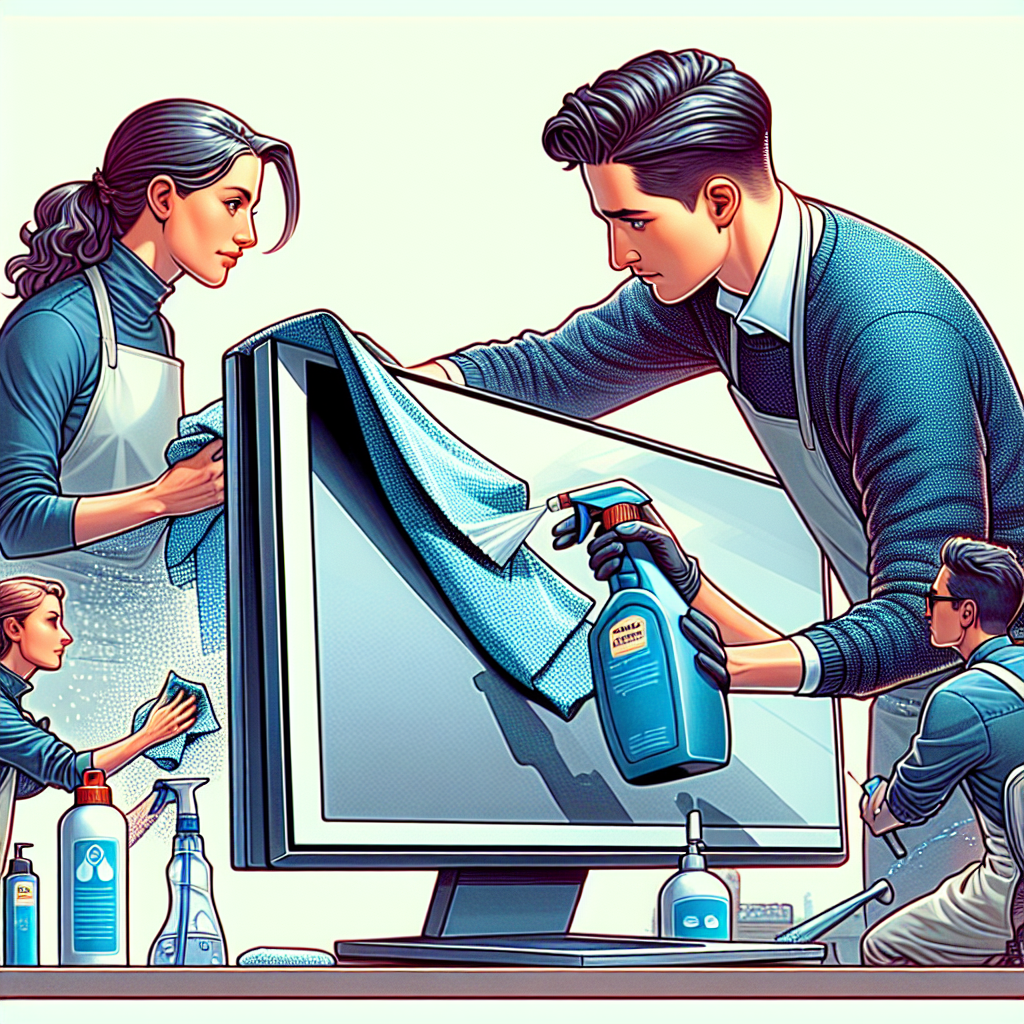Keeping your computer monitor or LCD screen clean is crucial not only for clarity and aesthetic appeal but also for prolonging the life of your device. Dust, fingerprints, and smudges can all contribute to a less than optimal screen display. Here’s a comprehensive guide to help you clean your computer monitor or LCD screen effectively.
Supplies You Will Need
Before you begin, gather the following supplies:
- Microfiber cloth
- Screen cleaning solution or distilled water
- Canned air (optional)
- Cotton swabs (optional)
Precautions to Take
While cleaning your monitor is straightforward, it’s essential to follow specific precautions to avoid damaging your screen:
- Always power off your computer and monitor before cleaning.
- Unplug your monitor to minimize any electric shock risk.
- Avoid spraying cleaning solutions directly onto the screen.
- Do not use paper towels or rough cloths which can scratch the screen.
Step-by-Step Guide to Cleaning Your Monitor
Step 1: Turn Off and Unplug
Before you start cleaning, turn off your computer and monitor. Unplug the monitor from the power source to ensure safety.
Step 2: Dust Off the Screen
Use a can of compressed air to blow away any loose dust or debris from the screen. This prevents dust particles from scratching the screen when you wipe it.
Step 3: Wipe with a Dry Microfiber Cloth
Using a dry microfiber cloth, gently wipe the screen in a circular motion. This removes most fingerprints and light smudges.
Step 4: Apply Cleaning Solution
Mist a small amount of screen cleaning solution onto the microfiber cloth. If you don’t have a screen cleaning solution, use distilled water but avoid tap water as it contains minerals that can leave residue.
Step 5: Clean the Screen
Gently wipe the monitor with the damp cloth. Do not press too hard as this can damage the pixels. Focus on areas with visible grime or fingerprints.
Step 6: Dry the Screen
Once you have cleaned the screen with the damp cloth, use a dry portion of the microfiber cloth to dry the screen. Ensure no moisture remains.
Step 7: Clean the Monitor Frame
Don’t forget to clean the frame of the monitor as it can accumulate dust and grime. Use the same microfiber cloth, starting from the top and working your way down.
Cleaning Agents to Avoid
Not all cleaning agents are suitable for use on LCD screens. Avoid using the following:
- Ammonia-based cleaners
- Alcohol-based cleaners
- Acid-based cleaners
- Paper towels
Maintaining a Clean Monitor
To keep your monitor clean for longer periods:
- Avoid touching the screen directly with your fingers.
- Dust the monitor regularly with a microfiber cloth.
- Keep food and drinks away from the computer area.
- Use a screen protector to minimize scratches and smudges.
Common Mistakes to Avoid
Here are some common mistakes people make when cleaning their monitors and how to avoid them:
- Using Paper Towels: These can scratch and damage the screen. Always use a microfiber cloth.
- Spraying Directly on the Screen: This can cause liquid to seep into the monitor, potentially causing damage. Spray onto the cloth instead.
- Using Harsh Chemicals: Avoid ammonia or alcohol-based cleaners as they can strip off the protective coating of the screen.
- Not Powering Off: Always turn off and unplug the monitor to avoid electric shock and to see smudges more clearly.
Periodic Deep Cleaning
In addition to regular light cleaning, schedule a more thorough cleaning session every few months to maintain your monitor in pristine condition. This involves cleaning the monitor stand, backing, and even the cables. Use the same microfiber cloth and cleaning solution for these parts.
Conclusion
Regularly cleaning your computer monitor or LCD screen will significantly enhance its longevity and your viewing experience. By following these step-by-step instructions, you can ensure your screen remains clear, bright, and free from damage. So, keep your workspace clean and your monitor spotless for a better computing experience.

